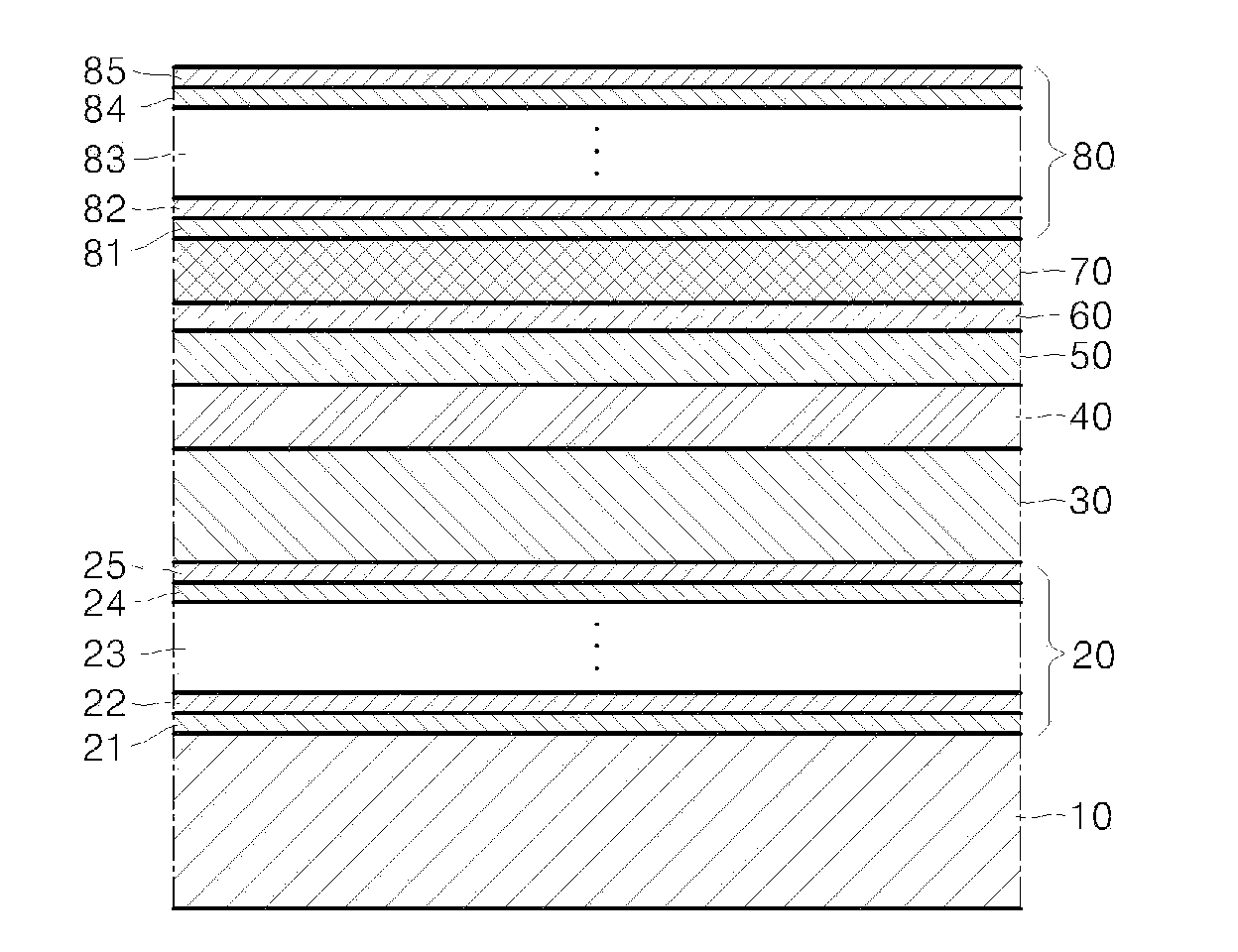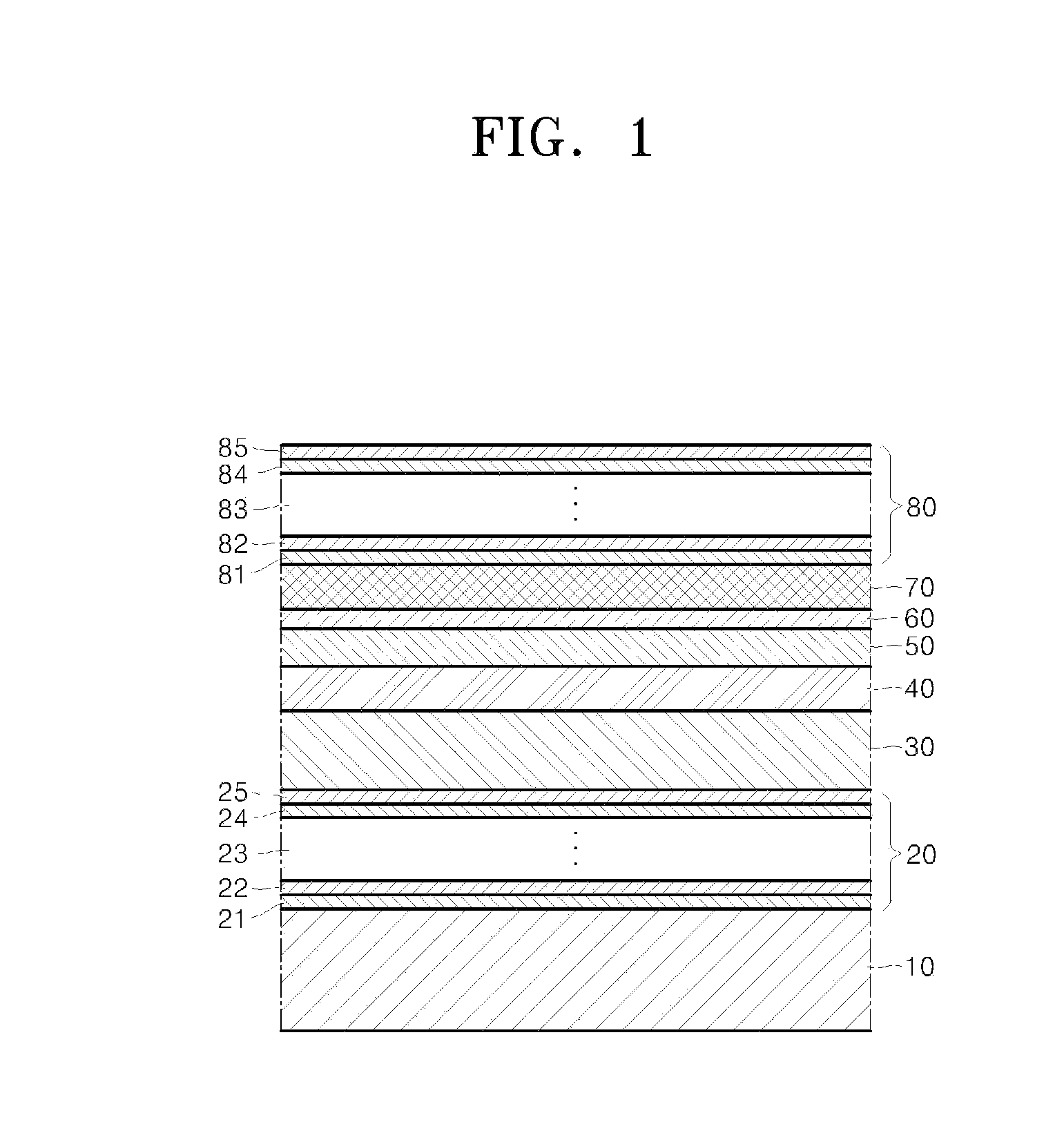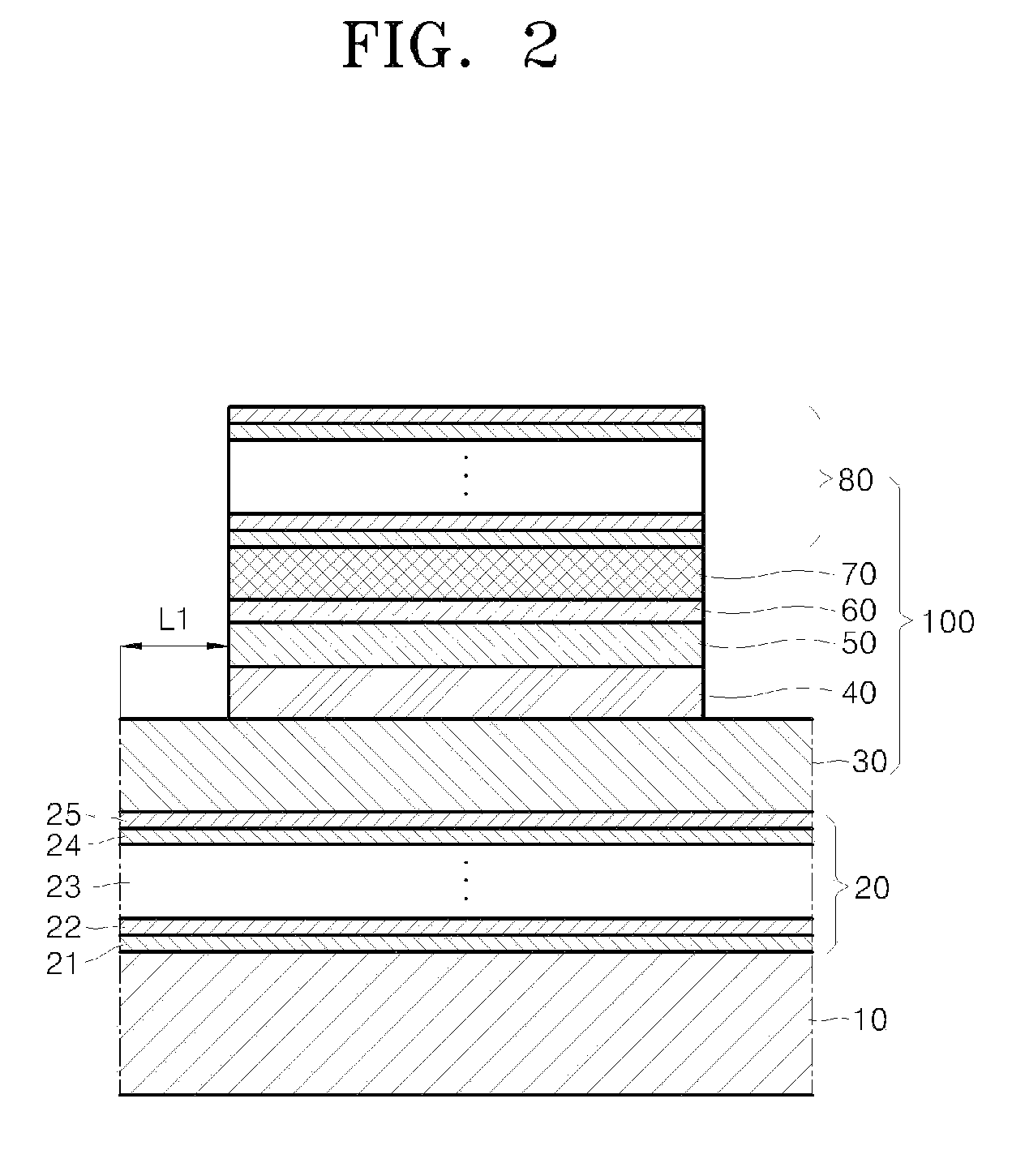Long wavelength vertical cavity surface emitting laser device and method of fabricating the same
a laser device and laser technology, applied in the direction of lasers, lasers using scattering effects, semiconductor lasers, etc., can solve the problems of weak coupling efficiency, difficult long-distance optical communication, gain and stability of gain medium can deteriorate, etc., to achieve low thermal conductivity, stable connection, and high reliability
- Summary
- Abstract
- Description
- Claims
- Application Information
AI Technical Summary
Benefits of technology
Problems solved by technology
Method used
Image
Examples
Embodiment Construction
[0041]The present invention will now be described more fully with reference to the accompanying drawings, in which exemplary embodiments of the invention are shown. The invention may, however, be embodied in many different forms and should not be construed as being limited to the embodiments set forth herein; rather, these embodiments are provided so that this disclosure will be thorough and complete, and will fully convey the concept of the invention to those of ordinary skill in the art.
[0042]FIGS. 1 through 5 are cross-sectional views of a surface emitting layer device and are for explaining a method of fabricating the surface emitting layer device, according to embodiments of the present invention.
[0043]Referring to FIG. 1, a lower mirror layer 20, an active layer 40, a tunnel junction layer 60 and an upper mirror layer 80 are sequentially grown on a compound semiconductor substrate 10 by using an epitaxial growth method. At this time, a first conducting layer 30 may be further ...
PUM
 Login to View More
Login to View More Abstract
Description
Claims
Application Information
 Login to View More
Login to View More - R&D
- Intellectual Property
- Life Sciences
- Materials
- Tech Scout
- Unparalleled Data Quality
- Higher Quality Content
- 60% Fewer Hallucinations
Browse by: Latest US Patents, China's latest patents, Technical Efficacy Thesaurus, Application Domain, Technology Topic, Popular Technical Reports.
© 2025 PatSnap. All rights reserved.Legal|Privacy policy|Modern Slavery Act Transparency Statement|Sitemap|About US| Contact US: help@patsnap.com



